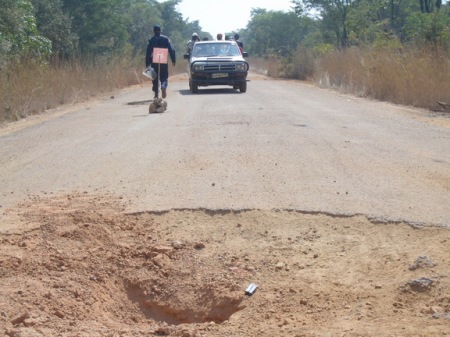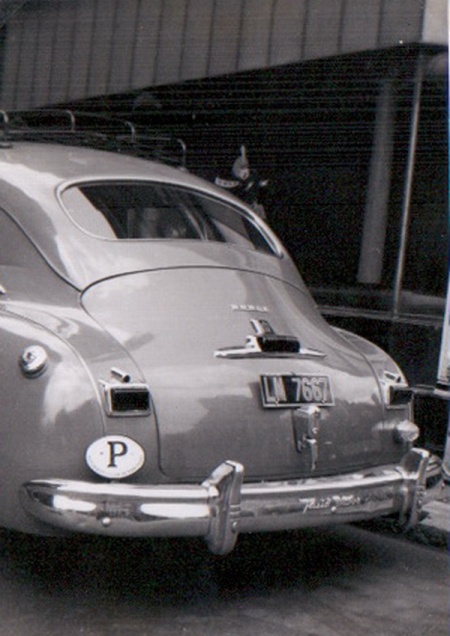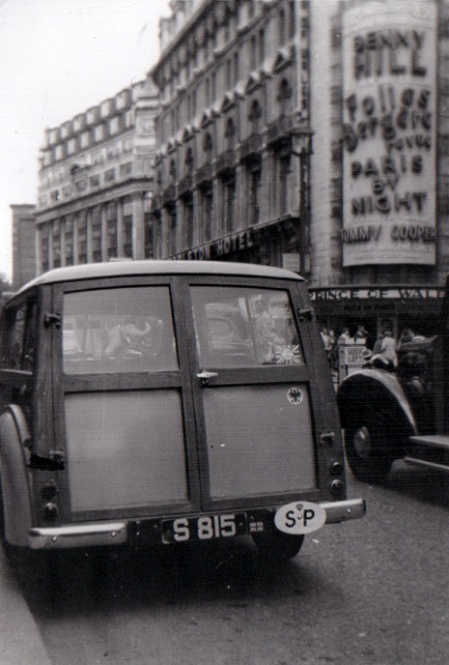
This Renault 750 from the (French) Trusteeship of the Cameroons was an unusual sight in 1951 Britain, and probably France, too. 3703 C 2 carries the correct 1932-1960 oval TC and uses the original French-designed registration format. John Pemberton archive.
c. 1962 The British Cameroons, until then part of British Nigeria, amalgamated with the French Trusteeship in 1961, to form the new, independent country of Republique Unie de Cameroun. For a while, it seems that cars from both the former Cameroons used the long-lived TC oval, as witness CM 2938, from the British sector, in London’s Bayswater during the early 1960s, on a Ford 105E Anglia. The ‘ TC ‘ had been overpainted on a formally pressed ‘ WAN ‘ oval and this example was the only one ever seen in UK – (unless YOU know otherwise!). (VB)
1960 With no change to the 1932 series of (up to) four numerals, a C and a serial number – came a change of International Code, to CAM. This Fiat 1500 sports was seen in Juan les-Pins in 1960. (VB archive)
Below:
Another change of Oval is seen on Fiat 850 W 2326 A, found in Middlesex in 1963. W was the regional code for West Cameroun (Buea); the RFC abbreviation was presumably for République Fédérale de Cameroun, but has not been officially recognised. Classic stencilled French plates of the period at the rear…. (VB)
1970s:

c. 1970 This Camerounian consular corps Datsun IT 9175 CC, attached to the US embassy, lived briefly in Swiss Cottage, London, during the 1970s. Brumby archive
‘IT ‘ was the abbreviation of Importation Temporaire, whereby such medium-term visitors to the country as Consular, Diplomatic and Technical Aid/NGO personnel and others, could enter their vehicles to the country free of import and local duties, on the understanding that they were to be re-exported at the end of tour. Failing that, duties became payable and normal plates issued to the car. When the vehicle was attached to an embassy or consulate, CD or CC was added as a suffix. Other temporary imports used simple IT and up to four numbers.

Some vehicles arbitrarily chose a blue background , particularly in the CM former British sector. Luoma archive.
~~~~~~~~~~~~~~~~~~~~~~~~~~~~
NOTES
Cameroun ALMOST holds the record for the territory which has used the greatest number of International Ovals
TC, CAM, RFC, RUC and now CMR
But Congo (Leopldville) just pips Cameroun, with CB, RCL, CGO, ZR, ZRE, and now DRC, (which, somewhat tongue-in-cheek, uses the ‘ D ‘ to refer to a political system not yet adopted by that country – though might possibly, in the forthcoming centuries…)







 Posted by Victor Brumby
Posted by Victor Brumby 


































































